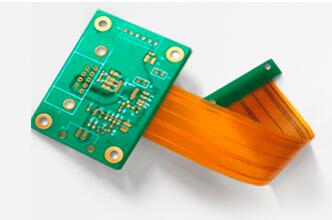Flex board and rigid board refer to the two main materials commonly used in electronic products, which have significant differences in physical properties, scope of use, and applicable scenarios. Flex boards have the characteristics of being flex and bendable, suitable for scenarios that require bending and folding; Rigid board, on the other hand, has the characteristics of hardness and stability, making it suitable for scenarios that require stability and durability. In addition, there are differences in manufacturing processes, costs, reliability, and other aspects between flex and rigid boards. By comparing flex boards and hard boards, we can better understand their characteristics and application areas.

The difference between rigid board and felx board
1. Differences in physical properties
There are significant differences in physical properties between flex boards and rigid boards.
1) Flex boards are usually made of flex materials, such as polyimide (PI) film, polyester film, etc., which have good flexibility and bendability.
2) A rigid board, on the other hand, is usually made of hard materials such as fiberglass, ceramics, metals, etc., which have high hardness and stability.
2. Differences in usage scope
There are also differences in the scope of use between flex and rigid boards.
1) Rigid boards are suitable for scenarios that require bending and folding due to their flexibility and bendability. For example, flexible display screens, foldable phones, etc. all use flex boards as the basic material.
2) Due to its rigidity and stability, rigid boards are suitable for scenarios that require stability and durability. For example, computer motherboards, electronic device casings, etc. all use rigid boards as the basic materials.
3. Differences in applicable scenarios
There are also differences in the applicable scenarios between flex and rigid boards.
1) Flex boards are suitable for scenarios that require bending and folding due to their flexibility. For example, a bendable display screen can be bent according to user needs, making the device more portable and flexible.
2) Due to its stability, rigid boards are suitable for scenarios that require stability and durability. For example, computer motherboards need to stably support the operation of various hardware devices, so rigid boards need to be used to ensure the stability and reliability of the devices.
4. Differences in manufacturing processes, costs, and reliability
There are also differences in manufacturing process, cost, and reliability between flex and rigid boards.
1) The manufacturing process of flex boards is relatively simple and can be produced through printing, film lamination, and other methods, with relatively low costs.
2) The manufacturing process of rigid boards is relatively complex, requiring multiple processes of processing and assembly, and the cost is relatively high. In addition, due to their flexibility, flex boards are easily affected by the external environment during use, and their reliability is relatively low; However, due to their stability and hardness, the reliability of rigid boards is relatively high.
A rigid board is the support body in electronic components, usually using FR4 as the substrate and cannot be bent, such as computer motherboards, mobile phone motherboards, etc.
Flex boards generally use PI as the substrate, which is a flexible material with excellent characteristics such as lightweight, thin thickness, and the ability to bend and fold on its own. PCB flex boards can be connected through terminal connections, or they can be avoided by using flex and rigid boards. Many rigid boards can be configured and connected using layout methods.